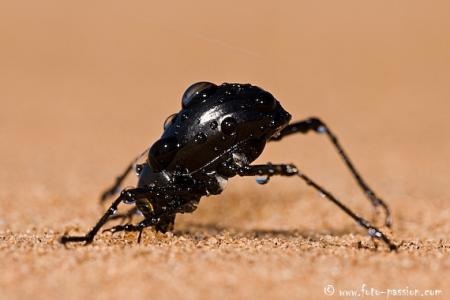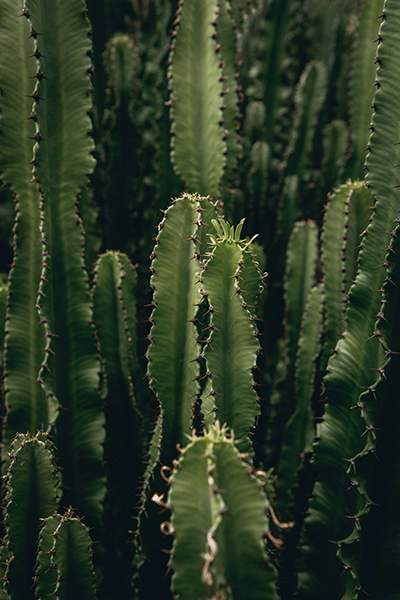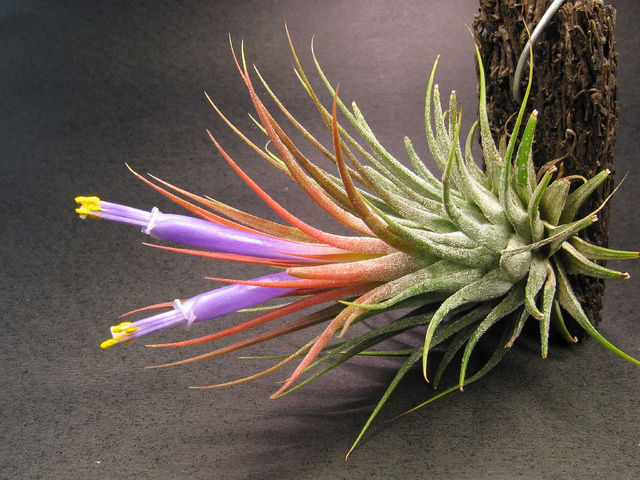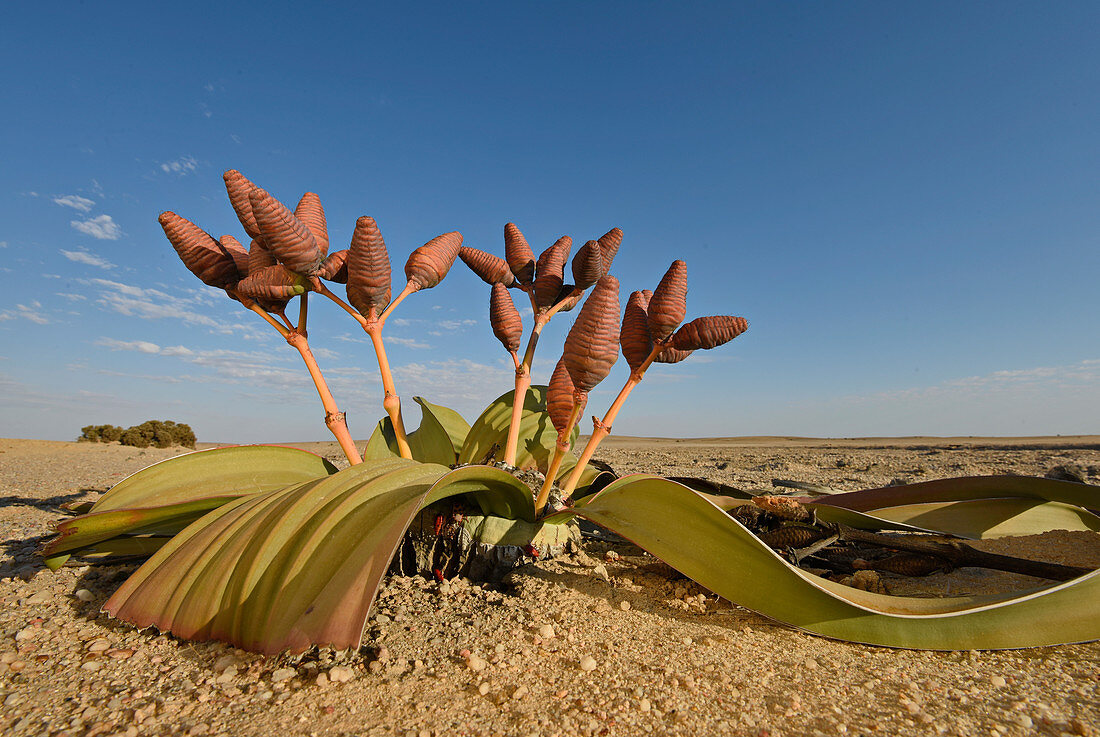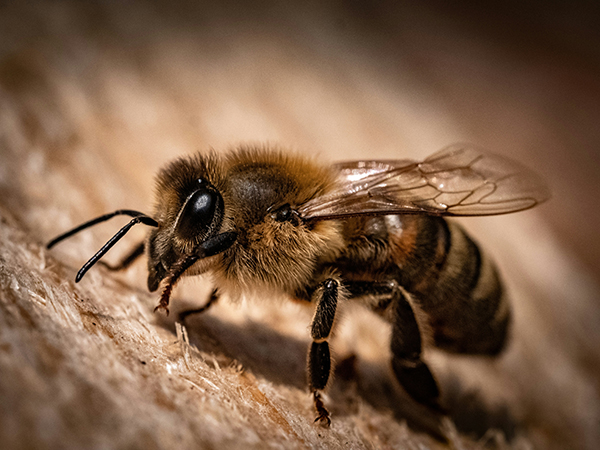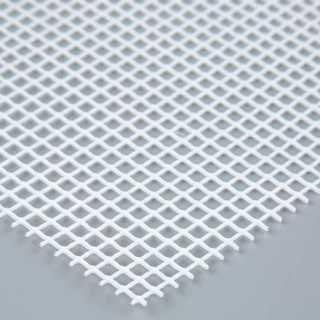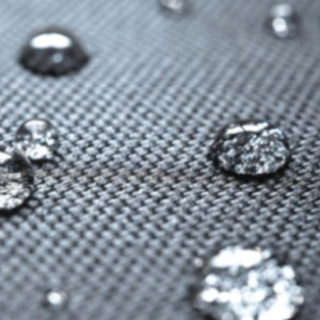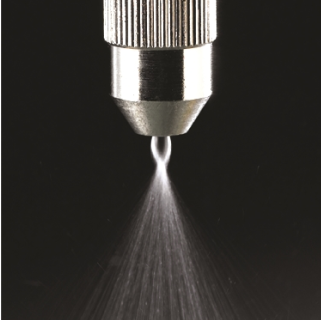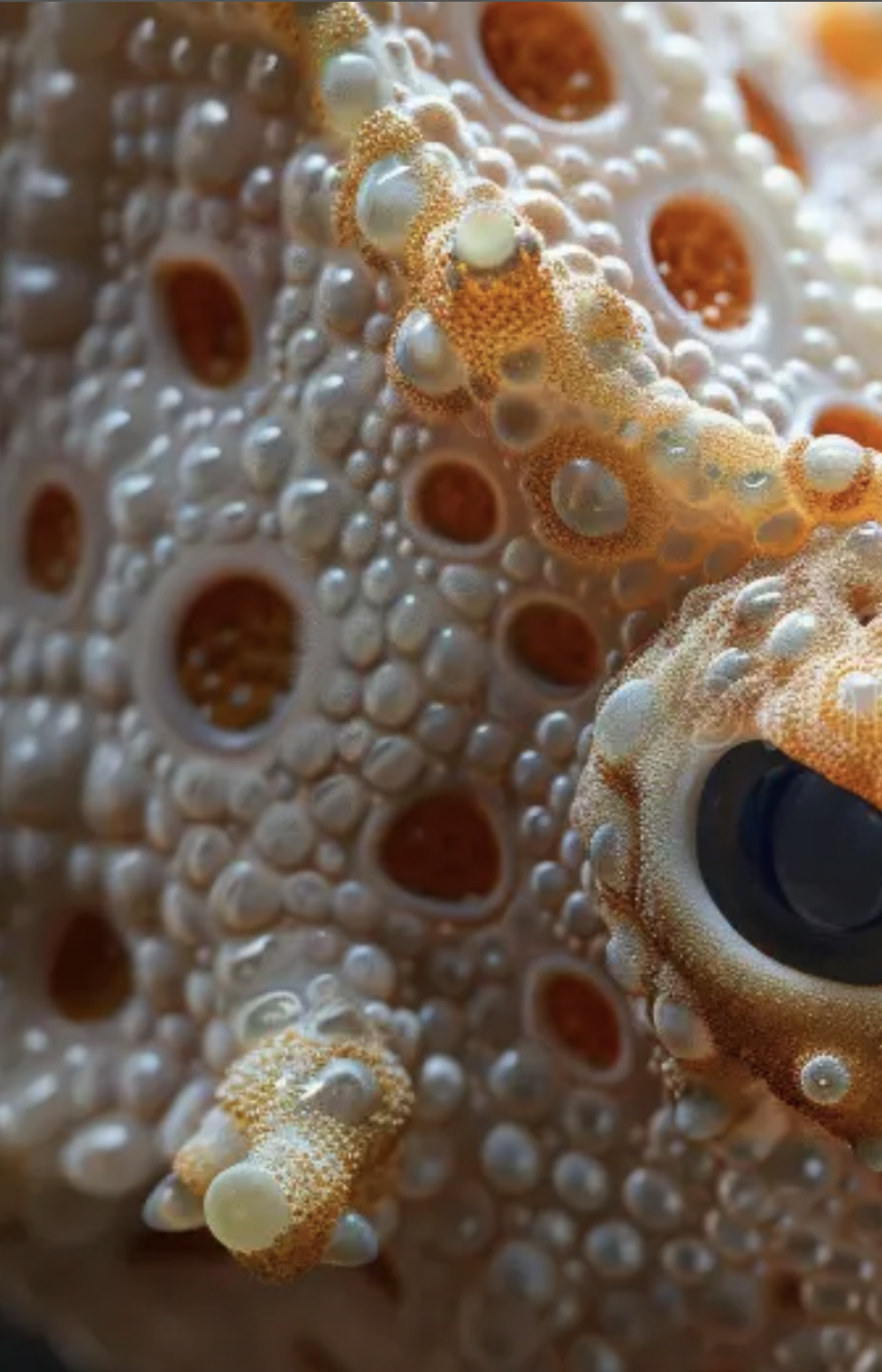Water vapor collection
from industrial plumes
Rising global temperatures and increasing water scarcity are putting pressure on industrial cooling systems. Power plants struggle to stay operational without sufficient water for cooling towers. As fresh water resources are diminishing, current cooling methods are proving to be unsustainable and urgently in need of innovation.

Help energy providers capture vapor to reduce water use.
Recover water vapor from industrial plumes before it disperses into the atmosphere, reintegrating it into industrial processes to reduce freshwater consumption.
- Low energy consumption (passive or hybrid systems)
- Compatible with diverse plume compositions (temperature, pollutants)
- Materials must resist corrosion, heat, and fouling
- Reasonable cost and easy integration on existing sites
Why do industrial plumes waste so much water?
Industrial plumes contain large amounts of water vapor, yet this potential resource is often lost to the atmosphere. This waste results from a lack of capture systems that can withstand the thermal, chemical, and energy constraints of plumes. Key issues identified:
- Condensation is hindered by low surface contact, poor orientation, and unsuitable materials
- Current systems consume too much energy, relying on active cooling or compression
- Recovered water is often contaminated with volatile compounds, particles, or corrosive gases
- Fluctuating weather conditions reduce system reliability and efficiency
AI agents guided a root-cause analysis of these limitations.
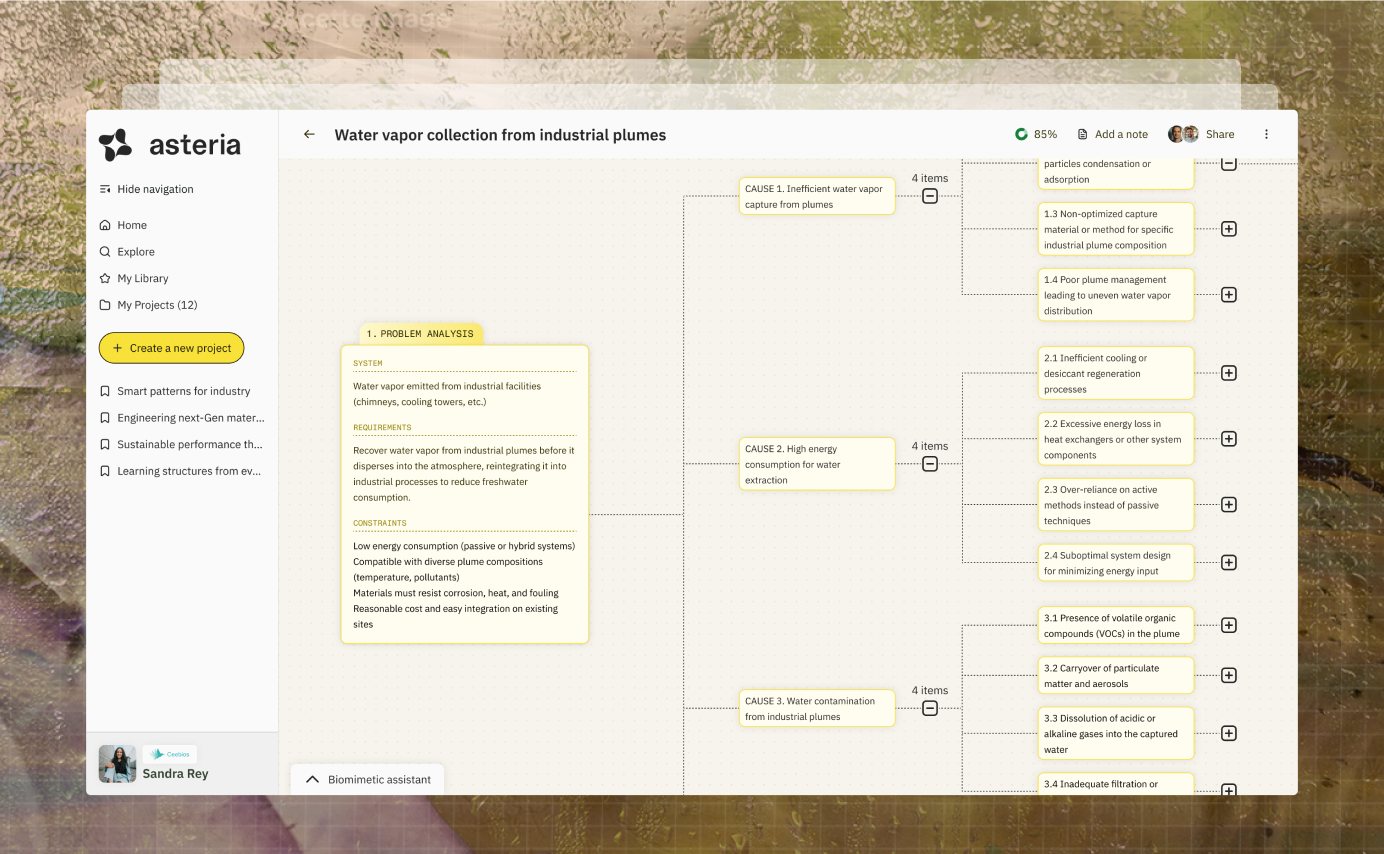
Nature-inspired mechanisms to collect moisture
The biomimetic strategies explored for this project draw on natural adaptations to efficiently collect atmospheric water, even in arid or unstable environments. Examples include:
- Microscale surface texture : Thorny lizard, rattlesnake, namib desert beetle
- High-surface-area structures with converging channels. : Bishop pine, tillandsia, cacti
- Capillary action within microchannels : Rattlesnake
- Hydrophilic and hydrophobic combination to promote nucleation sites : Namib desert beetle, thorny lizard, mango leaves
Together, these approaches inspire new ways of designing water condensing systems.
Asteria then helps you generate ideas of concrete bioinspired concepts leveraging both the various selected biological mechanisms and the modeling of the project's context.



Designed for R&D innovation,
design and durability
Collaborate with nature
GET a demo





.png)








